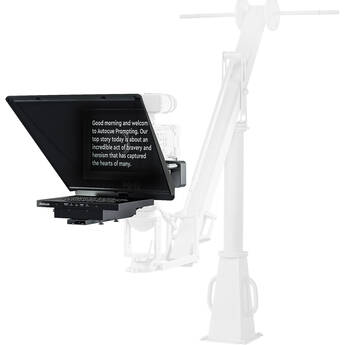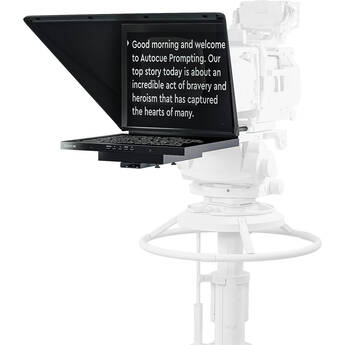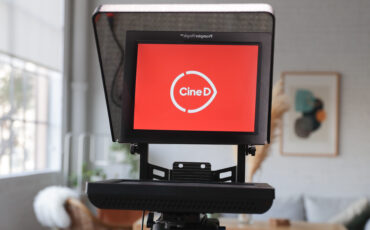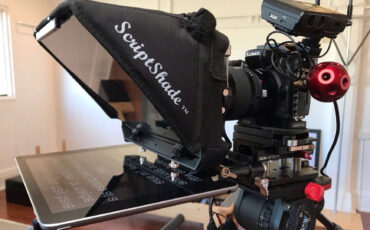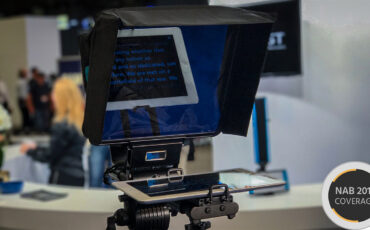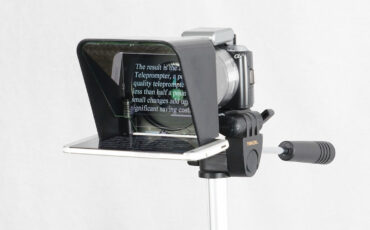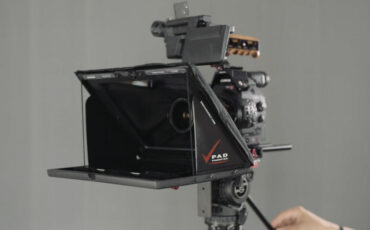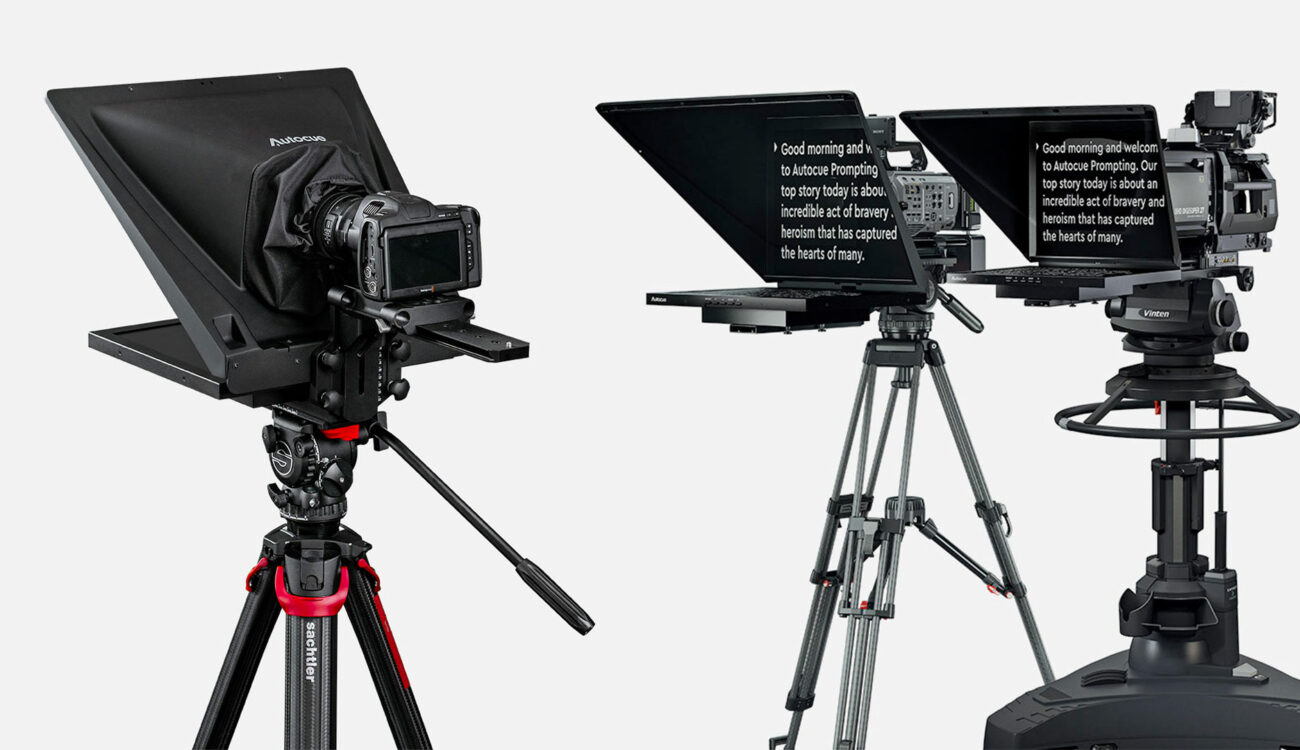
Autocue has recently revamped their entire lineup of prompters, which now consists of only three series: the Explorer, Pioneer, and Navigator. The Explorer series is for content creators and production companies, the Pioneer prompters are for broadcast use, and the Navigator is for conferences. So let’s take a closer look at these new products!
Prompters was a broadcast-only accessory for many years, and Autocue has been an industry leader in that field since 1955. Indeed, like Coca-Cola for Coke, an Autocue is often the word used to call a prompter.
Since the “DSLR revolution” a dozen years ago, prompters have become more affordable and widely used, especially in the YouTube world. Indeed, you can now find prompters that use your smartphone or tablet as a screen. But, if you want to go the extra step, a dedicated prompter with a bigger screen is much more comfortable to work with.
Over the years, Autocue – now part of the Videndum Group – has had many different products on store shelves. So to streamline things, the company simplified its lineup and launched six new products.
Philip Bloom's Cinematic Masterclass

Autocue Explorer prompters
The Autocue Explorer line comprises two products: the Explorer 17″ and Explorer 19″ teleprompters. The only difference between them is the screen size.
The Explorer series is designed for DSLR/Mirrorless and small cinema camera shooters. Your camera attaches to the Autocue Explorer’s baseplate and the prompter attaches to your tripod.

The baseplate’s height can be adjusted from 2″/5cm to 5.5″/14cm, and the center of balance is adjusted by sliding the camera back and forth on the baseplate’s 19mm rod.
In front of the camera’s lens, you’ll find a 70/30 beamsplitter glass. In addition, the Autocue Explorer is equipped with a hood and an adjustable fabric lens seal to prevent any unwanted light from passing through.
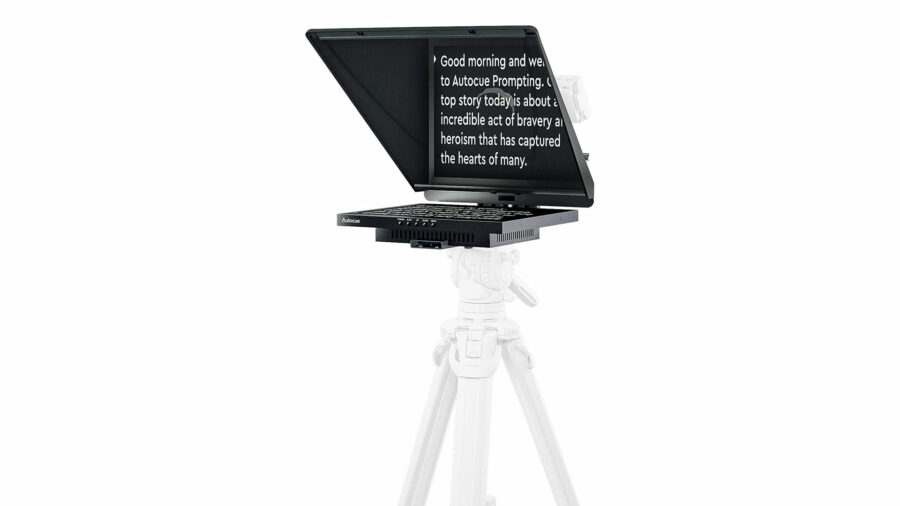
The Autocue Explorer comes with a screen that has a 4:3 aspect ratio, a resolution of 1280×1024, a maximum brightness of 400lx, and a 20″/51cm reading range. The screen connects to your laptop/computer via HDMI, VGA, or composite video inputs.
Last but not least, the Autocue Explorer comes with a one-year license for the dedicated teleprompting software.
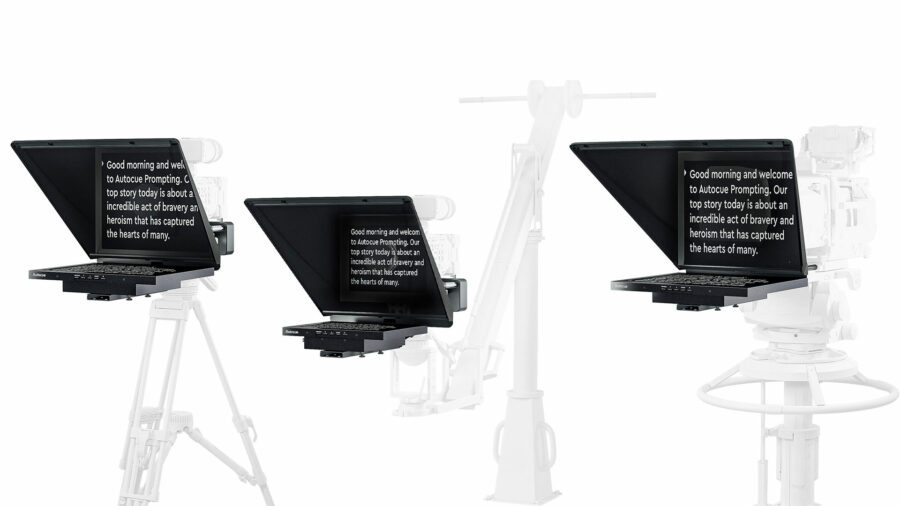
Autocue Pioneer prompters
Next is the Autocue Pioneer prompter line, which consists of four products: the Explorer 12″/17″/19″, and a particular 19″ version for studio box lenses.
Most of the features are identical between the Explorer and Pioneer series. However, the Autocue Pioneer’s monitor is brighter at 1500lx and has an extra SDI video input. Also, the Pioneer line can carry heavier cameras thanks to an adjustable 11lb counterweight, included with the monitor.
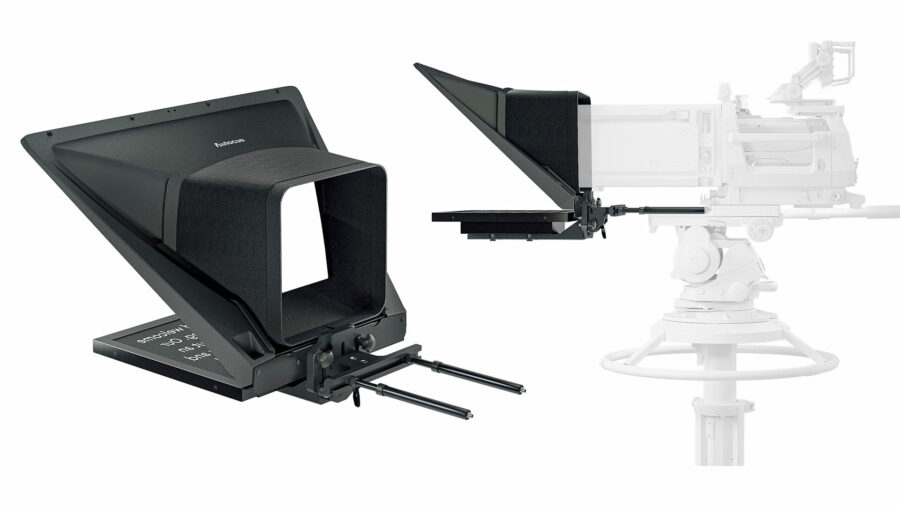
The Autocue Pioneer 19″ teleprompter for studio box lenses is slightly different, as it does not have a baseplate but uses rods, and the prompter’s lens hood is designed for box-style lenses.
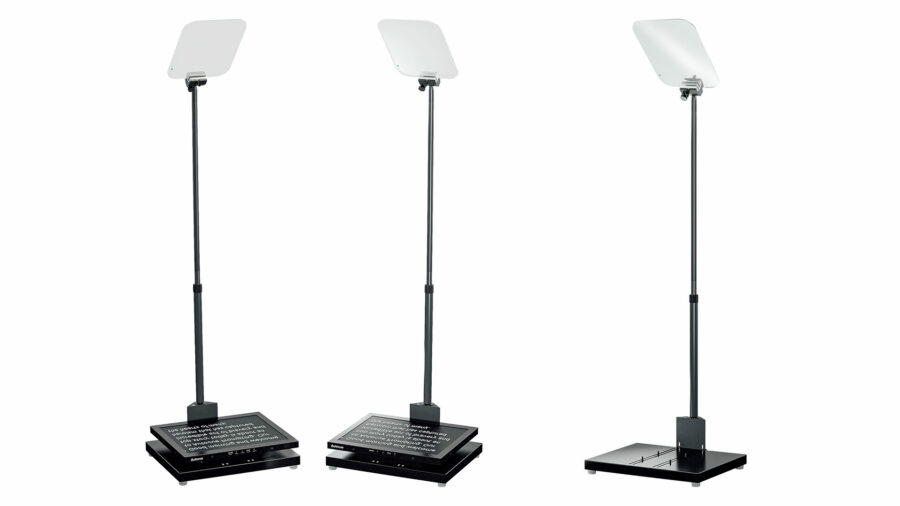
Autocue Navigator series
Finally, we have the Autocue Navigator, which is not designed for filmmakers and content creators, but mainly for conferences. The Navigator is a telescopic stand with a screen at the bottom. The height of the 70/30 beamsplitter glass can be adjusted from 38.8″/98cm to 86.1″/218cm to fit different speaker heights.
Several versions are available with either one or two stands, and a two-stand high-brightness version.

Pricing and availability
All of these new Autocue products will start shipping at the end of this month:
- Autocue Explorer 17″: €2,495.49/$2,612.50
- Autocue Explorer 19″: €2,772.06/$2,845.25
- Pioneer 12″: €4,575.06/$4,702.50
- Pioneer 17″ Studio: €4,990.98/$5,177.50
- Autocue Pioneer 19″ Studio: €5,490.08/$5,652.50
- Autocue Pioneer 19″ Studio Box lens: €5,684.17/$5,842.50
- The Navigator starts at $1,795.50
For more information, please visit Autocue’s website here.
What do you think about the Autocue lineup revamp? Do you often use a prompter to speed up your shoots? Don’t hesitate to let us know in the comments down below!





